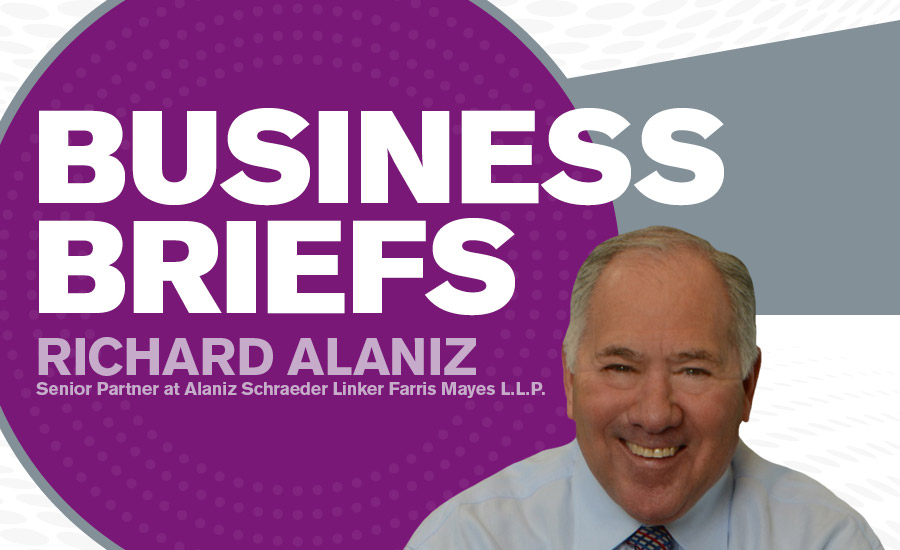The roar of churning helicopter blades, the flashing of lights on the vehicles of armed local and federal law enforcement agents, blocked roads surrounding the plant, and panicked employees running in all directions, this was the scene recently at the Southern Provision meat packing plant in Bean Station, Tennessee. Almost 100 unauthorized workers were rounded up for processing and deportation. Their devastated families struggled to get information about their loved-ones. Mothers in custody worried about who would care for their children when they were unable to return home. Somewhat similar scenes have been repeated at several other workplaces in the past several months. Why? The short answer is that aggressive enforcement against illegal immigration is the order of the day.
It has been several years since U.S. Immigration and Customs Enforcement (ICE) conducted surprise raids on unsuspecting workplaces. It is one of the tools ICE has once again begun to use to address the illegal immigrant issue that so dominates today’s news cycle. This division of the Department of Homeland Security (DHS), which has some on the left calling for its elimination, has been much more assertive in conducting workplace monitoring in 2018 than in any prior year. Considerably more! That is to be expected given the laser-like focus on illegal immigration of the Trump administration. Attempting to dry up the jobs magnet that is the ultimate attraction for most illegal immigrants is one of the highest priorities of the administration. In the first seven months of this year, there have been over 5,000 I-9 audits of U.S. workplaces. That is more than four times the number of Notices of Inspection (NOIs) (audits) that were issued in all of 2017. In addition, ICE agents have arrested an average of over 4,000 illegal immigrants per month compared to the slightly more than 1,700 per month during the Obama administration. The practice of conducting workplace raids, largely unused during the last administration, has returned with vigor as seen in the Southern Provision case and several others. In another recent high profile case involving a large mid-western flower and garden center, ICE agents working undercover went to the employee breakroom and began passing out donuts shortly before the raid. Over 100 undocumented workers were taken into custody, many of them while they were enjoying their government-issued donuts. These employees were then processed for deportation.
Does all of this increased focus on workplace enforcement mean that you are likely to receive an NOI in the near future? That may depend upon your particular industry. While ICE does not reveal which industries are being targeted, it is apparent that the recent focus has been on businesses that have a heavy concentration of Latino/Hispanic employees, such as meat packing, horticulture and similar labor intensive industries. Businesses in other industries that have received an NOI generally drew scrutiny because of specific complaints or incidents, often involving identity theft or rejected job applicants. But this does not mean that if you are not in one of these targeted industries you should have no concerns. The ICE focus on workplaces is not likely to diminish any time soon.
WHAT CAN YOU DO?
There are pro-active steps that a judicious employer may want to consider. One of the most simple and cost-effective measures that an employer can take is to conduct a self-audit of their I-9s. The most common result of an ICE audit is fines for technical recordkeeping violations. Employers are always free to correct some of the more common, correctable errors before a formal audit occurs. In fact, since an employer has three days in which to submit the I-9s pursuant to an NOI many employers use that three day period to attempt to correct these types of mistakes. Some of the more common errors made in completing the I-9s that can trigger fines are:
- Failure to re-verify the work authorization of employees with an Employment Authorization Document (EAD card);
- Re-verifying the documents of U.S. citizens or permanent residents (green card holders);
- Failure to complete the I-9 in a timely manner. Section 1 must be signed by the end of the first workday of the employee. Section 2 must be completed by the employer no later than 3 business days after the employee begins work;
- Failure to record information in every section, even if it is only N/A; and
- Failure to discard 1-9s that are no longer required to be maintained. I-9s must be kept for 3 years past the date of hire or 1 year after the end of the employment, whichever is later.
One of the most common reasons for incomplete I-9s is the lack of proper training for the individual(s) responsible for the completion of the I-9s. It is a document that requires time and attention to detail. A sincere effort to assure adequate training will help minimize costly recordkeeping errors. An additional reason for sloppy I-9’s is a failure of the employer to emphasize the significance of the document. It is too often viewed as just one more piece of paper that goes into the personnel file. That attitude can be costly.
SHOULD YOU USE E-VERIFY?
Another step that some employers have taken as a way to minimize the effects of an ICE audit is to enroll in E-Verify. Federal contractors are obligated to utilize E-Verify. In addition, some states make it mandatory. It is an Internet-based system offered by DHS in conjunction with the Social Security Administration (SSA). By using E-Verify, employers are able to electronically verify the employment eligibility of newly hired employees. When an employer submits information from Sections 1 and 2 of the completed I-9, it is compared to information in the DHS and SSA data bases. The information must be submitted within three business days of the employee’s start date. The employer will receive a response confirming that the person is authorized to work or a tentative non-confirmation of the right to work. The latter response requires the employer to take certain action, but it may not at that point terminate the employee. While E-Verify is not a safe harbor against workplace enforcement, employers who utilize the system are entitled to a presumption that they did not knowingly hire unauthorized workers. This presumption can be significant because it also shields them from potential criminal prosecution.
Before deciding to enroll in E-Verify, it is critical that an employer fully explores the pros and cons of the program. Serious consideration of the potential consequences is definitely in order. Let us first consider some of the more significant “pros” of enrolling in E-Verify:
- By utilizing the system, an employer is able to promptly electronically verify the employment eligibility of the new employee;
- It permits the “rebuttable presumption” that the employer did not knowingly hire an unauthorized employee;
- Use of E-Verify dramatically reduces the likelihood of receiving a Social Security mismatch letter;
- Its use helps reduce the costs of training by avoiding the hiring of persons who are later found ineligible to work; and
- Since E-Verify is likely to become mandatory at some future date, the employer would be ahead of the curve and experienced in its use when it is mandated.
Some of the more commonly cited “cons” of adopting E-Verify include:
- All employers enrolling in E-Verify must sign and comply with a Memorandum of Understanding (MOU) that permits automatic government access to the employer’s workplace for periodic audits of compliance;
- E-Verify cannot detect identity fraud;
- E-Verify will require additional administrative costs to train employees on proper use and the actions required in the event of tentative or final non-confirmation;
- Exposure to increased government security by other enforcement agencies comes with participation in E-Verify since information is shared between agencies; and
- E-Verify is not perfect and mistakes may be made with tentative or final non-confirmation of persons who are actually authorized to work.
CONCLUSION
Whether to enroll in E-Verify is a significant decision that many employers are unwilling to make for a variety of reasons, only some of which have been identified above. One thing however is clear, continued and even increased ICE enforcement activity, especially focusing on the workplace, will continue at least through the remainder of the current administration. Any steps that an employer takes to be prepared for when an NOI is received will substantially reduce the potential for costly fines.
Publication date: 11/5/2018
Want more HVAC industry news and information? Join The NEWS on Facebook, Twitter, and LinkedIn today!











